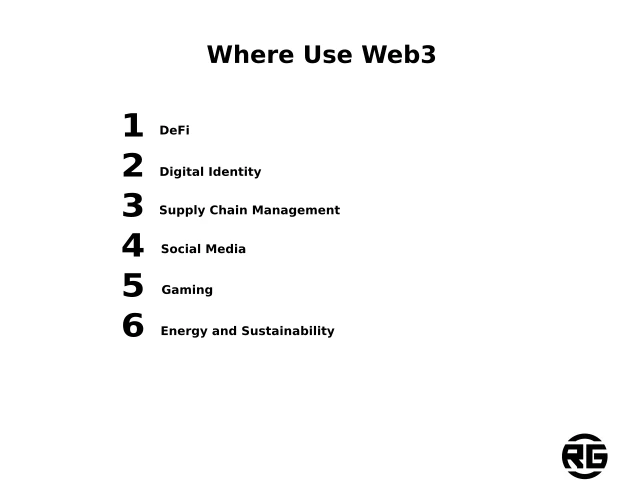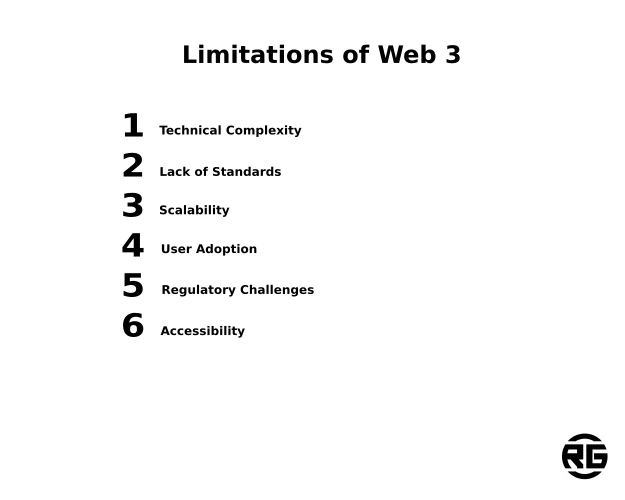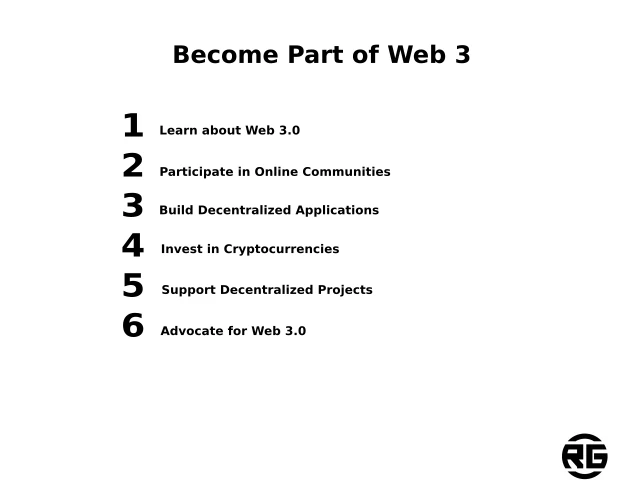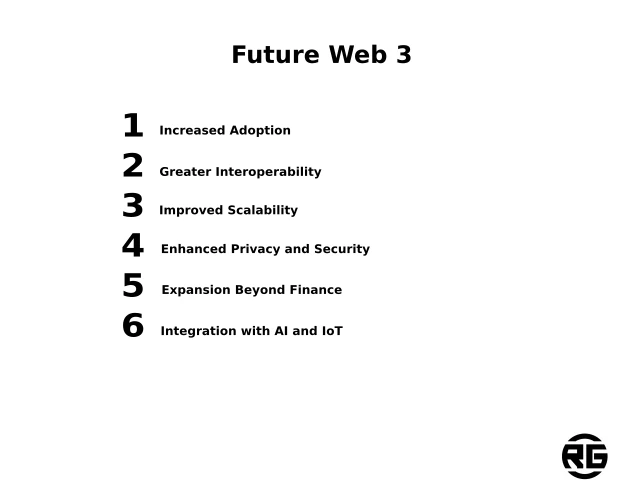Introduction
Surely, everything you need to know about Web3 you can find here in this article. Let’s start from begining.
Another key aspect of this technology is the concept of decentralized applications, or DApps.
Indeed, DApps are applications that run on a decentralized network. They are also not controlled by a single entity.
This allows for more control and privacy for users, but not only…
As well as greater security and protection from hacking or data breaches.
Web3 also places a greater emphasis on user ownership and control of data.
In the current internet landscape, user data is often collected, indeed. But, they are sold without knowledge their users.
In this technology, users would have more control over their data.
They can choose how it is using and sharing.
Key Features of Web3
Firstly, One of the main features of this technology are smart contracts.
They are self-executing contract, but with the terms of the agreement.
Particularly, agreement is between buyer and seller directly written into lines of code.
Secondly, smart contracts are stored on a blockchain. So, it making them immutable and transparent.
Thirdly, they can be used for a variety of purposes.
Such as digital identity verification, supply chain management, and financial transactions.
Another key aspect of Web3 is the concept of decentralized applications, or DApps.
What’s more, DApps are applications that run on a decentralized network. As well as, cryptocurrency conception is, they are not controlled by a single entity.
This allows for more control and privacy for users. As well as greater security and protection from hacking or data breaches.
Web3 also places a greater emphasis on user ownership and control of data.
In the current internet landscape, surely user data is often collected and sold without their knowledge or consent.
While, in new network technology, users would have more control over their data.
Then, be able to choose how it is used and shared.
Historical Background of Web3
Obviously, for better understanding the historical background of Web3.
It’s also important to first look at the evolution of the internet itself. In fact, the first version of the internet, known as Web 1.0.
Historically so speaking, it was primarily a collection of static HTML pages that were read-only.
This version of the global network was dominated by corporations and large organizations, of course.
Then, Web 2.0 came to live in the early 2000s. It was obviously characterized by the rise of user-generated content and social media platforms. This next Internet version allowed for more user participation and also interaction.
It was still under control a small number of tech giants.
Finally, the concept of Web3 (called Web 3.0), or the decentralized network, emerged in the early 2010s.
Of course, it was response to the limitations of the existing centralized network.
The centralized network, because is dominated by a small number of powerful corporations, has been criticized.
Overall, critisizm goes from a few sources, because lack of privacy, control, and transparency.
As well as for its susceptibility to censorship and data breaches.
Beginnings of Web3
In fact, the first significant movement was the creation of Bitcoin in 2009. Then was introduced the concept of a decentralization.
What means peer-to-peer network for financial transactions, simply say so.
What’s more, Bitcoin’s underlying technology, blockchain. Blockchain itself surely enabled the creation of a trustless and transparent ledger.
But, they could be used for a wide range of applications beyond financial transactions.
Then, in 2014, Ethereum, a decentralized platform for building decentralized applications (DApps), was launched.
Especially, Ethereum introduced the concept of smart contracts. They are self-executing contracts.
They are obviously between buyer and seller being directly written into code. Further, smart contracts enabled the creation of more complex and sophisticated DApps.
They are using in wide range of purposes, so…
In detail, including finance, identity verification, and supply chain management.
In the years since Ethereum’s launch, a number of other blockchain platforms and protocols have emerged.
Each with their own unique features and capabilities.
These include following platforms like EOS, Tezos, and Polkadot.
As well as protocols like IPFS (InterPlanetary File System) and Whisper.
The last two of them aim to create a more decentralized and privacy-focused network.
Where We Use Web3 ?
Web3 is still in its early stages.
But there are already a number of use cases and applications for the decentralized network.
Some of the following areas where you can find this exciting technology.
Decentralized finance (DeFi)
Surely, Web3 is in decentralized financial applications.
Such as decentralized exchanges, lending platforms, and stablecoins.
Digital identity
Web3 is in decentralized digital identity systems.
Obviously, they are provide users with greater control over their personal data and privacy.
Supply chain management
Web3 can you find in more transparent and efficient supply chains, so they are with smart contracts
and also blockchain technology in the same time.
They enabling better tracking and management of goods and services.
Social media
Web3 is in decentralized social media platforms, indeed. They are not controlled by a single entity.
They are giving users more control over their data and privacy, so they are better accepted.
Gaming
Next, Web3 is in decentralized gaming platforms.
Generally, all of that by ownership and control of in-game assets and economies.
Energy and sustainability
Web3 can be also used to create more efficient and sustainable energy systems.
Indeed, blockchain technology enabling the creation of decentralized energy markets and peer-to-peer energy trading.
Particularly, these are just a few examples of the potential applications for this technology.
As the technology develops and matures, then it’s more likely to see many more use cases emerge.

Where can Web3 technology be used? Well, starting with DeFi, gaming and ending with social media.
As we are still in the early adoption stage, the possibilities will continue to grow.
What’s more, there will be many more applications. Believe it or not.
We can already observe a strong trend that will not go back.
Limitations
Web3, also known as the decentralized network or the semantic network. So to say, it’s an evolving concept that aims to create a more open, decentralized, and user-controlled internet experience.
While Web3 has the potential to address many of the shortcomings of the current global network.
It also has some limitations that need to be addressed, as well.
Here are some of the following limitations of them.
Technical complexity
This technology have complex technical infrastructure, indeed. It is as blockchain and distributed ledger technology.
They are surely challenging for users to understand and navigate.
Of course, this complexity may limit the adoption of Web3 by mainstream users.
Lack of standards
In fact, there are currently no standardized protocols. So, frameworks for building Web3 applications need to be more regulated.
This can make it difficult for developers as well.
Then, creation interoperable and scalable applications become more difficult.
Scalability
It may happen that in reality many application aren’t be able to handle large-scale adoption.
Of course, this may limit the ability of Web3. Further, it’s their weak point in compete with centralized network applications.
User adoption
To fully realize the potential of Web3 it will require significant user adoption.
However, convincing users to switch from centralized network applications may be challenging.
Regulatory challenges
Web3 applications operate in a regulatory grey area, which can create uncertainty and risk for users and developers.
Regulatory challenges may limit the adoption of this technology and prevent it from achieving its full potential.
Accessibility
It relies heavily on new and emerging technologies.
They may not be accessible to users with limited technological resources or skills.
This may limit the ability of this technology to create a truly decentralized and inclusive internet experience.

Like any technology, Web3 also has its limitations.
For beginners and those who have no previous contact with cryptocurrencies, the entry level is quite high.
The technology itself may seem complicated at first.
This is just the beginning of the problems you may encounter.
Add scalability (the problem of cryptocurrencies), early adoption and availability.
Either way, this technology is worth learning.
Development Stage of Web3 ?
Answer to that questions we receive in the last paragraph about limitations.
We are in the early stage of developement as like adoption of cryptocurrency.
Everything you need to know about it is that we are early.
How Become Part of Project
Here are some ways to start with:
Learn about Web3 technologies
It’s important to have a basic understanding of the technologies that underpin it.
Such as blockchain, distributed ledger technology, and decentralized applications (dApps).
Participate in online communities
There are many online communities in topic Web3.
You can learn from experts and connect with other enthusiasts.
Participating in these communities can help you stay up-to-date on the latest developments and opportunities in it.
Build decentralized applications
If you have programming skills, you can start building decentralized applications.
You can using platforms such as Ethereum or Polkadot.
There are many resources available online to help you start with.
Invest in cryptocurrencies
Investing in cryptocurrencies such as Bitcoin or Ether can be a way to support the development of Web3.
They are potentially earn a return on your investment.
Support decentralized projects
There are many decentralized projects and organizations working on Web3 development.
Such as the InterPlanetary File System (IPFS) and the Web3 Foundation.
Supporting these projects through donations or other means can help accelerate the development of Web3.
Advocate for Web3
Advocating for Web3 and educating others about its potential benefits can help raise awareness about Web3.
Everything you need to know about it is also answering on involvment question.

If you see the possibilities – just like the author of the text – join one of the groups.
There are many of them interested in Web3 technology.
You can also actively learn about this technology. That’s the way it is!
Opportunities open up to those who have open minds. Especially, in case of technology.
The innovators and people with the earliest adoption usually benefit the most.
All this is due to the fact that…
These people simply know before others. How to make money using this technology, but not only.
Because, they know before another how improve their lives and experiences on the Internet.
Generally speaking, it is these people who have an advantage over those who…
Just learning about the technology and still wondering about its usefulness.
Future Web3
The future of Web3 is called as the decentralized network or the semantic network.
It is still evolving and changing by a number of trends and developments.
Here are some potential directions that Web3 could take in the future.
Increased adoption
As more users become familiar with the benefits of this technology, we can expect to see
increased adoption of decentralized applications and services.
This could lead to a more user-controlled and decentralized internet experience.
Greater interoperability
As the technology ecosystem matures, we may see the development of standardized protocols
and frameworks that enable greater interoperability between different
decentralized applications and services. This could lead to a more seamless and integrated internet experience.
Improved scalability
As Web3 technologies continue to evolve, we may see new solutions to the scalability challenges
that currently limit the adoption of decentralized applications.
This could enable Web3 to compete with centralized network applications on a larger scale.
Enhanced privacy and security
Web3 technologies are designed to prioritize user privacy and security.
As these technologies continue to evolve, we may see even stronger privacy
and security protections that enable users to have greater control over their personal data.
Expansion beyond finance
While many Web3 applications currently focus on decentralized finance (DeFi),
we may see the development of a wider range of decentralized applications
that address other sectors such as healthcare, education, and governance.
Integration with AI and IoT
Web3 may become integrated with emerging technologies.
Such as artificial intelligence (AI) and the Internet of Things (IoT).
Enabling even more powerful and transformative applications and services.
Overall, the future of this technology is likely to be a combination of technological advancements,
user adoption, and regulatory developments.
While there are still challenges and limitations to be addressed.
Web3 has the potential to create a more user-controlled and decentralized
internet experience that empowers individuals and communities.
That’s all in this moment – everything you need to know about Web3.
We covered most of the answers on the most important questions.

Without a doubt, the future belongs to Web3 technologies.
This is not only due to the facts and motives that can currently be observed on the market, but …
Also to natural technological progress. First we had Web1, now we have Web2 and next will be Web3.
It is difficult to determine more precisely when.
This technology will dominate the Internet. Have no doubt, that time will come.
Conclusion
Overall, Web3 represents a significant shift in the way we think about and interact with the internet. Especially, with focus on decentralization, security, and user control. Indeed, this technology has the potential to transform many aspects of our daily lives, from finance and commerce to social interactions and personal data management.
Web3 is also next step in progression of development of Internet – one of the best technology invention nowadays.
In the nature of this technology is make people life easier.
Only last question come to mind before the end of reading of this article:
Do you see how this technology can make your life easier?
Everything you need to know about Web3 is article what answer on many essential questions.

Leave a Reply
You must be logged in to post a comment.